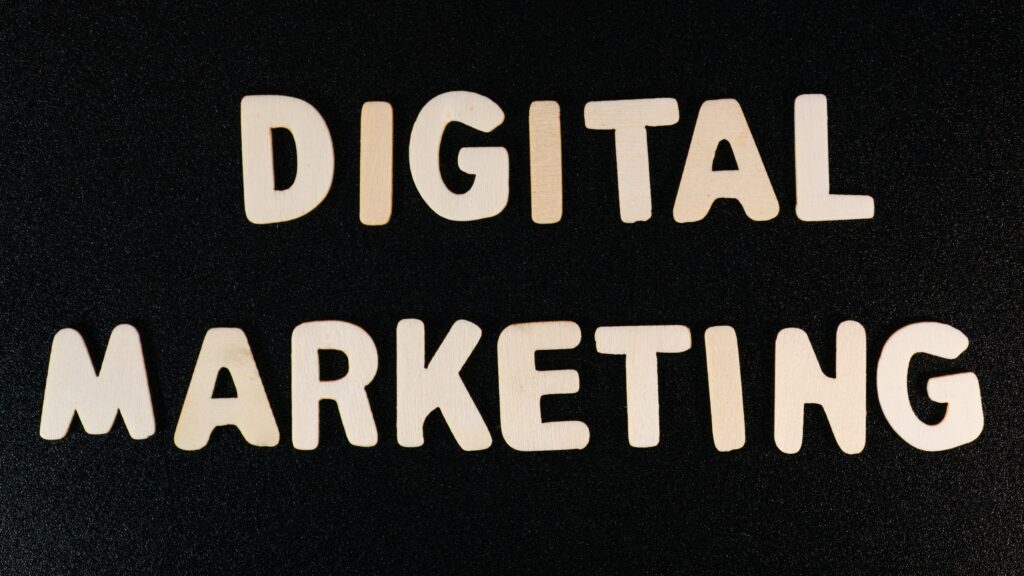Introduction
In today’s digital-first world, having a strong online presence is no longer optional for businesses—it’s essential. Digital marketing encompasses all marketing efforts that use electronic devices or the internet to connect with current and prospective customers. This comprehensive guide will walk you through the fundamentals of digital marketing, explore the most effective channels and strategies, explain how to measure success, and provide a practical implementation roadmap for businesses of any size.
Digital marketing fundamentals
What is digital marketing?
Digital marketing is the promotion of products, services, or brands using digital technologies and channels. Unlike traditional marketing, digital marketing allows for precise targeting, real-time campaign adjustments, and measurable results. It’s about meeting your audience where they already spend time: online.
The digital marketing ecosystem
Digital marketing isn’t a single strategy but rather an ecosystem of interconnected channels and tactics:
- Owned media: Channels you control, like your website, blog, and social media profiles
- Paid media: Advertising you pay for, such as PPC ads, sponsored content, and display ads
- Earned media: Exposure gained through word-of-mouth, viral content, and PR efforts
The buyer’s Journey in digital marketing
Understanding the modern buyer’s journey is crucial for effective digital marketing:
- Awareness stage: Prospects recognize they have a problem
- Consideration stage: Prospects research solutions to their problem
- Decision stage: Prospects choose a solution provider
Your digital marketing strategy should address all three stages with appropriate content and messaging.
Major digital marketing channels and strategies
Search Engine Optimization (SEO)
SEO focuses on improving your website’s visibility in organic (non-paid) search engine results.
Key components include:
- On-page optimization (keywords, meta descriptions, content quality)
- Technical SEO (site speed, mobile-friendliness, structured data)
- Off-page SEO (backlinks, social signals, brand mentions)
SEO drives sustainable traffic but requires patience and consistent effort.
Content marketing
Content marketing involves creating and distributing valuable, relevant content to attract and engage a target audience.
Effective content marketing:
- Addresses customer pain points
- Establishes thought leadership
- Supports SEO efforts
- Nurtures leads through the sales funnel
Types of content include blog posts, whitepapers, case studies, infographics, videos, and podcasts.
Social media marketing
Social media marketing leverages platforms like Facebook, Instagram, Twitter, LinkedIn, and TikTok to connect with audiences, build brand awareness, and drive website traffic.
Key social media strategies:
- Platform-specific content strategies
- Community building and engagement
- Influencer partnerships
- Paid social advertising
Each platform has unique demographics and content preferences that should inform your approach.
Email marketing
Despite being one of the oldest digital marketing channels, email remains one of the most effective, with an average ROI of 36forevery36forevery1 spent.
Email marketing best practices:
- Segmentation and personalization
- Automated workflows and drip campaigns
- A/B testing subject lines and content
- Mobile-friendly design
Pay-Per-Click (PPC) advertising
PPC allows marketers to bid for ad placement in sponsored links on search engines and other digital properties.
PPC platforms include:
- Google Ads
- Microsoft Ads
- Social media advertising platforms
- Display and retargeting networks
PPC provides immediate visibility and precise targeting options.
Mobile marketing
With over 50% of global web traffic coming from mobile devices, mobile marketing is essential.
Mobile marketing tactics include:
- Responsive website design
- Mobile apps
- SMS marketing
- Location-based marketing
- Mobile-specific ad formats
Video marketing
Video content continues to dominate online engagement, with platforms like YouTube, TikTok, and Instagram prioritizing video content.
Types of marketing videos:
- Explainer videos
- Product demonstrations
- Customer testimonials
- Behind-the-scenes content
- Live streams
Key Performance Indicators and measurement approaches
Setting meaningful objectives
Effective digital marketing starts with SMART goals:
- Specific: Clearly defined objectives
- Measurable: Quantifiable metrics
- Achievable: Realistic given your resources
- Relevant: Aligned with business goals
- Time-bound: Set deadlines
Essential digital marketing metrics
Traffic metrics:
- Website visitors
- Traffic sources
- Page views
- Bounce rate
- Time on site
Engagement metrics:
- Social media engagement
- Email open and click-through rates
- Video watch time
- Comments and shares
Conversion metrics:
- Conversion rate
- Cost per acquisition
- Lead generation
- Sales
Customer metrics:
- Customer lifetime value
- Retention rate
- Churn rate
Analytics tools and platforms
Essential measurement tools:
- Google Analytics
- Google Search Console
- Social media analytics
- Email marketing platforms
- CRM systems
- Heat mapping tools
Attribution modeling
Understanding which touchpoints contribute to conversions is vital for optimizing marketing spend:
- First-touch attribution
- Last-touch attribution
- Linear attribution
- Time-decay attribution
- Position-based attribution
- Data-driven attribution
Implementation roadmap for businesses
For startups and small businesses
Month 1-3: Foundation building
- Create a simple, mobile-friendly website
- Set up Google Business Profile and local SEO
- Establish presence on 1-2 relevant social platforms
- Implement basic email marketing
- Set up Google Analytics
Month 4-6: Content development
- Begin regular blog posting
- Create lead magnets for email collection
- Develop customer testimonials
- Start experimenting with simple video content
Month 7-12: Growth and optimization
- Implement basic SEO strategy
- Test small-budget PPC campaigns
- Expand social media presence
- Begin more sophisticated email automation
For mid-sized businesses
Quarter 1: Strategy refinement
- Audit existing digital presence
- Develop comprehensive content calendar
- Implement advanced tracking and attribution
- Train team on digital marketing best practices
Quarter 2-3: Channel expansion
- Scale successful PPC campaigns
- Develop video marketing strategy
- Enhance SEO with technical improvements
- Implement more sophisticated email segmentation
Quarter 4: Integration and optimization
- Integrate marketing automation
- Develop retargeting strategies
- Implement A/B testing across channels
- Refine attribution models
For enterprise organizations
Phase 1: Digital transformation
- Align digital marketing with overall business strategy
- Develop center of excellence for digital marketing
- Implement comprehensive analytics infrastructure
- Establish cross-channel data integration
Phase 2: Personalization at scale
- Implement AI-driven personalization
- Develop omnichannel customer experience
- Create segment-specific content strategies
- Build advanced attribution models
Phase 3: Optimization and innovation
- Implement continuous optimization processes
- Develop predictive analytics capabilities
- Test emerging technologies and channels
- Build agile marketing frameworks
Common digital marketing challenges and solutions
Challenge 1: Standing out in crowded markets
Solution: Focus on unique value propositions and audience niches rather than competing directly with established players.
Challenge 2: Keeping up with algorithm changes
Solution: Focus on creating value for users rather than gaming algorithms, and stay informed through industry news sources.
Challenge 3: Measuring ROI
Solution: Implement proper tracking from the start, establish clear KPIs, and use attribution modeling.
Challenge 4: Content creation at scale
Solution: Develop a content calendar, repurpose content across channels, and consider outsourcing some content creation.
Conclusion
Digital marketing offers unprecedented opportunities to reach, engage, and convert customers. The key to success lies in understanding your audience, choosing the right channels, measuring your results, and continuously optimizing your approach.
Whether you’re just starting out or looking to refine an existing strategy, this guide provides the framework you need to succeed. Remember that digital marketing is both an art and a science—creativity matters, but so does data-driven decision making.
Ready to dive deeper into specific aspects of digital marketing? Explore our detailed guides on SEO, content marketing, social media, email marketing, PPC advertising, analytics, digital marketing tools, and mobile marketing.



